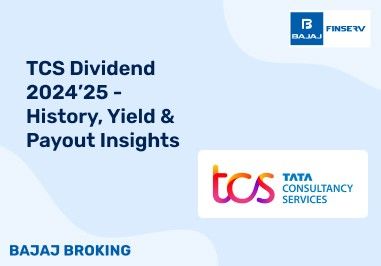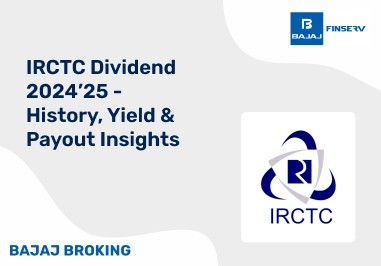What is Market Breadth?
Market breadth is also an indicator of investor sentiment and market momentum. Good breadth—where there are more advancing stocks than declining stocks—indicates good support for indices like the Bank nifty index price. This can validate bullish trends and make traders more confident while looking at Bank nifty price action. Poor breadth indicates weakening sentiment, which can be a precursor to reversals or corrections in indices like the Nifty 50 price.
On top of that, market breadth also can pick up divergences in the movement of an index and the underlying stocks' performance. For instance, when the Sensex price advances and a majority of constituent stocks decline, it can suggest that the handful of large-cap stocks are spearheading the upmove—a warning for the investor.
What Does Market Breadth Indicate?
Market breadth indicates market strength and the mood of investors. If more stocks are advancing than declining, it indicates strong support for indices such as the Bank Nifty index price. This may validate upward trends and make traders feel confident while observing Bank Nifty price action. Weak breadth indicates declining sentiment, which can forecast declines or reversals in indices such as the Nifty 50 price.
In addition, market breadth can also identify inconsistencies between index value and underlying share action. For instance, if the Sensex index price increases when most constituent stocks decline, it can indicate that only a limited number of large-cap stocks are driving value—a caution for investors.
Components of Market Breadth
Market breadth consists of several essential components that help gauge the overall market sentiment and strength. The primary components include:
- Number of Advancing and Declining Stocks: This is the fundamental aspect of market breadth, where the total count of stocks that have increased in price is compared to those that have decreased.
- New Highs and New Lows: Tracking the number of stocks reaching new 52-week highs versus those hitting new lows provides insights into market strength over time.
- Volume of Trade: The trading volume associated with advancing and declining stocks adds depth to the analysis, helping to confirm whether price movements are supported by substantial investor interest.
Knowledge of these factors is crucial for investors looking at the price of indices like the BSE Sensex or Nifty 50, as they determine if the movement of the market is broad or restricted to a few shares. For instance, if the Nifty share price is rising when the majority of the stocks are falling, it can show a lack of the market's underlying strength.
Market Breadth and Volume of Trade
The relationship between market breadth and trading volume is significant in assessing market dynamics. When a high number of stocks are advancing alongside strong trading volumes, it indicates robust market participation and confidence among investors. Conversely, if advancing stocks are accompanied by low volume, it may suggest that the upward movement lacks conviction and could be short-lived.
In the context of Indian markets, such as the Bank nifty index price movements, understanding this relationship helps traders make informed decisions. A surge in the Nifty 50 price backed by strong volume often signals a healthy market environment, while a rise in prices with weak volume may raise concerns about sustainability.
Relation Between Market Breadth and Market Sentiment
Market breadth is an important market sentiment indicator as a whole. Investor bullishness is signaled when there are more advancing stocks than declining stocks, and it can be a sign of possible up moves in key indices such as the BSE Sensex. Negative breadth is a sign of bearish sentiment and that there are more declining stocks than advancing stocks.
This sentiment analysis is crucial for traders and investors as it can provide early warnings about potential reversals or corrections. For example, if the Nifty index share price continues to rise while market breadth deteriorates, it may signal an impending downturn. Thus, monitoring market breadth allows participants to gauge whether current trends are supported by broad participation or if they are merely driven by a handful of stocks.
Types of Market Breadth Indicators
Several indicators can be utilized to assess market breadth effectively:
- Advance/Decline Line: This cumulative indicator tracks the difference between advancing and declining stocks over time.
- New Highs/New Lows Index: This indicator compares the number of new highs to the number of new lows to assess overall market strength.
- Volume-Based Indicators: These metrics analyze trading volumes associated with advancing versus declining stocks to determine the strength behind price movements.
Understanding these indicators is essential for investors navigating Indian financial markets, especially during events like upcoming IPOs when market dynamics can shift rapidly. By utilizing these tools, traders can better assess whether indices such as the Bank nifty index price reflect genuine bullish trends or if caution is warranted.
Calculating Breadth Indicators
Calculating market breadth indicators involves several methods that provide insights into the overall market direction. Key indicators include:
- Advance-Decline Line (AD Line): This is calculated by starting with an initial value (often zero) and then adding the difference between the number of advancing and declining stocks for each trading day. The resulting value shows cumulative market breadth over time.
- Advance-Decline Ratio: This ratio is determined by dividing the number of advancing stocks by the number of declining stocks. A higher ratio indicates stronger market breadth, suggesting that more stocks are participating in a bullish trend.
- New Highs/New Lows Index: This indicator counts the number of stocks reaching new highs and subtracts those hitting new lows, providing a measure of overall market strength.
These calculations are particularly relevant for investors analyzing indices like the BSE Sensex or Nifty index share price, as they help assess whether current trends are supported by broad market participation or driven by a few large-cap stocks.
Application of Market Breadth
Market breadth is applied in various ways to enhance investment strategies and decision-making. It helps traders figure out potential market corrections or trends, allowing them to adjust their portfolios accordingly. For instance, if market breadth indicates a broad-based rally in stocks, investors may consider increasing their exposure to equities, particularly in indices such as the Nifty 50 price.
Conversely, if breadth shows signs of weakening while major indices like the Bank nifty index price are rising, it may prompt traders to exercise caution and reduce exposure to riskier assets. This application is crucial during periods of heightened volatility or when anticipating events such as upcoming IPOs, where market dynamics can shift rapidly.
Limitations of Market Breadth
- False Signals: Market breadth indicators can sometimes provide misleading signals, particularly during periods of low volatility or when influenced by a few large-cap stocks.
- Lagging Indicator: These indicators often react to price movements rather than predict them, which may result in delayed responses to market changes.
- Context Dependency: The effectiveness of market breadth can vary based on market conditions and should not be used in isolation; it is essential to consider other technical indicators alongside it.
Understanding these limitations is vital for investors navigating Indian financial markets, especially when analyzing indices like the Sensex index price or Bank nifty price.
Conclusion
In total, market breadth is a vital tool for investors who want to know the overall health and moving trend of the stock market. By analyzing components such as advancing and declining stocks, trading volume, and various breadth indicators, traders can gain valuable insights into market sentiment. While it provides significant advantages in assessing trends and making informed decisions regarding indices like the BSE Sensex and Nifty 50 price, it is crucial to remain aware of its limitations. An integrated approach considering more than one indicator will improve decision-making processes in the ever-changing realm of Indian finance.













